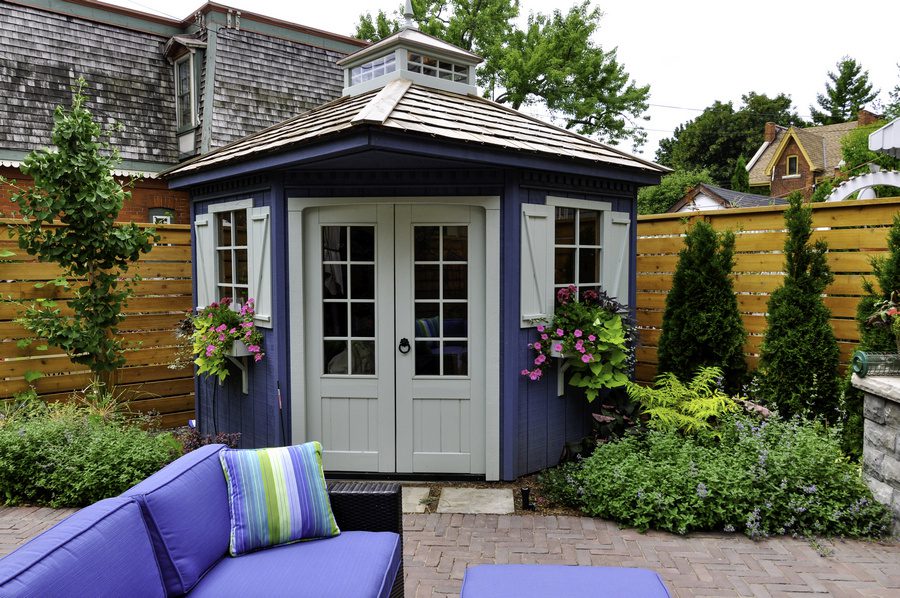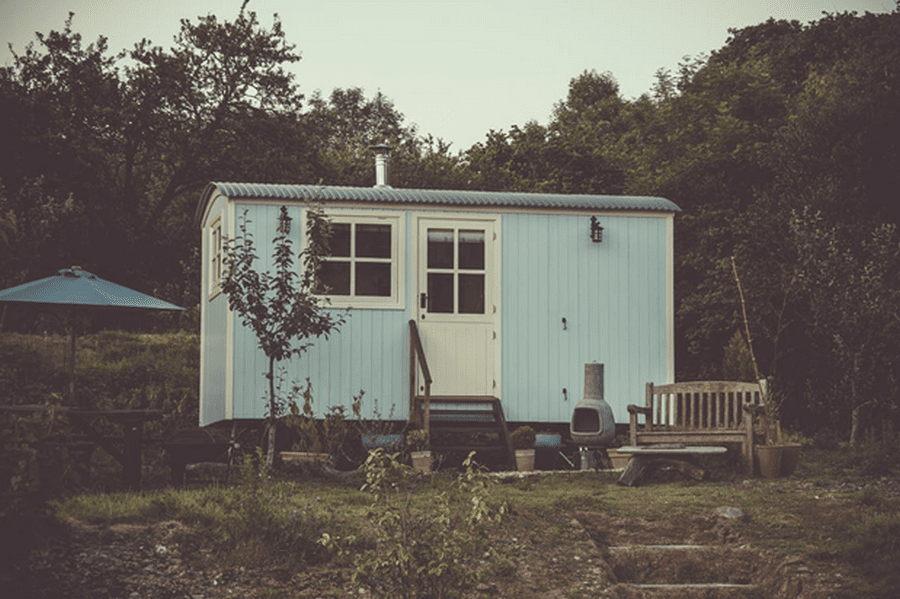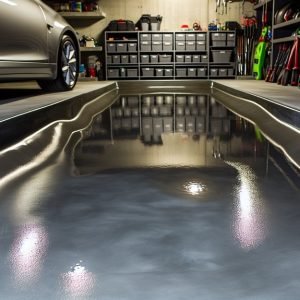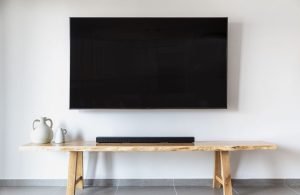Last Updated on October 23, 2025 by teamobn
Gone are the days when garden sheds were plain old storage spaces. These days, modern homeowners are busy utilising these spaces for recreational and business activities.
Residential liveable sheds have become the talk of the neighbourhood. They are easy to set up and fun to use. All these shed conversions require are DIY kits with paint, drywall, furnishings, and essential utilities. After which, property owners can use the space to work, play, and entertain.
The popularity of this home improvement trend has resulted in a range of different shed home options. Each varies in architectural style and structure according to the purpose it serves.
If you’re interested in setting up this functional space in your yard, reading this guide will help streamline your choices. Learn all about the types of shed houses available in the market and the factors involved in building one.
Contents
3 Popular Types of Residential Liveable Sheds for Your Home
Here are standard shed house options to choose from:
1. Your Home Away from Home
You can either opt for a liveable shed with multiple rooms or create a cosy corner for some me-time. There are multiple choices available depending on your goals and the space outside your house. Once they are standing, you can paint and decorate these living spaces like any other home.
You can even build an extensive shed house on empty land you might own. Not only is the setup quicker, but these homes are pretty low-maintenance. You will have to check on residential state laws and policies to ensure that these projects are legally compliant.
2. An All Work, No Play Home Office
Tired of noisy housemates and family members?
Sometimes you need extra peace and quiet to maintain your productivity levels throughout the day. You can also go without continuous interruptions when you’re attending a corporate Zoom meeting. Families (especially ones with younger members), despite their best intentions, do get in the way of work.
Instead of fussing over their behaviour, you can now keep everyone at a safe distance with a home office shed. Feel free to turn these residential liveable sheds into:
● A corporate corner with all your gadgets, printers, and work essentials.
● An art studio with crafty supplies, colourful decor, and a workbench.
● An outhouse kitchen designated for your catering business with no sticky fingers sneaking off with your food.
● A shared workspace for your small startup with small cubicles or a more laid back layout for the team
These customisable sheds shall ensure that nobody gets between you and your work. It’s also easier to balance work and home life. That’s because you’re physically compartmentalising the activities.
So it’s a win-win situation for working parents and aspiring entrepreneurs.
3. Give Guests Privacy with a Secluded Liveable Shed
Got a guest that might be staying for an extended period?
Whether it’s your grandparents, parents, in-laws, or loving sister, their presence would disrupt the usual household activities. Building a comfy and luxurious shed house (just for them) could set respectful boundaries. This way, each of you can do your own and live life at your pace.
Moreover, residential liveable sheds can help elderly members of your family reclaim their independence. It gives them a chance to create their schedules and do what they love without feeling dependant on you. Plus, the fact that they live close by means you can lend a hand whenever required.
The Checklist: How to Build the Perfect Shed House?
Once you have figured out what type of shed you want, you should consider the logistics. It would be best to consider cost, timeframe, and other variables before you invest. Otherwise, you risk spending money on an unrealistic project.
Here’s a checklist to streamline your residential liveable shed options:
● How much spare space do you have?
● Does the cost of the liveable shed kit and maintenance meet your budget?
● Can it withstand your regional climate?
● Are you planning to tear down the original storage shed?
● What DIY tasks can you complete by yourself?
● Will you need a contractor? How much would that cost?
These small details ensure that you don’t face any major issues when you build your shed house.
Pros and Cons of Living in Shed Homes
Shed homes have gained popularity in recent years. Once thought of as simple storage spaces, they’ve evolved into full-time residences, home offices, guest accommodations, and more. Their affordability and versatility appeal to homeowners looking for creative ways to expand their living spaces without breaking the bank. But as with any housing option, there are advantages and drawbacks to consider. If you’re thinking about living in a shed home, it’s important to weigh the pros and cons before making the investment.
The Benefits of Shed Homes
Affordability is one of the biggest advantages of shed homes. Compared to traditional houses, the cost of materials and construction is significantly lower. Many shed homes use DIY kits, which reduce labor costs and make the process more accessible. If you’re handy with tools and enjoy a good project, you can save even more by taking on some of the work yourself.
Faster construction time is another key benefit. Unlike conventional homes that may take months or years to build, a well-planned shed home can be set up in a matter of weeks. This makes them an attractive option for people looking for a quick housing solution, whether it’s a permanent residence, a guest house, or a home office.
Flexibility in design and use is another reason people choose shed homes. You can design them to suit a variety of purposes, from a quiet retreat to a bustling workspace. It’s easy to customize the layout, interior finishes, and features to match your personal style and functional needs.
Shed homes also tend to be low-maintenance. Because they are smaller and simpler than traditional homes, they require less time and money to maintain. This can free up more of your resources for other priorities.
If sustainability is a concern, shed homes can be an eco-friendly choice. Many people build them with recycled or repurposed materials. Smaller spaces also encourage more efficient energy use, which can reduce your carbon footprint.
The Drawbacks of Shed Homes
While shed homes have many benefits, they aren’t without their challenges. One of the biggest obstacles is meeting local zoning laws and building codes. Not all areas allow shed homes to be used as full-time residences. You’ll need to research your region’s regulations before committing to a project. Failing to do so can result in fines, legal issues, or even the need to dismantle your shed home.
Another concern is space limitations. Shed homes are often smaller than traditional houses. While this encourages minimalism and simpler living, it can feel restrictive for some people, especially families or those used to larger spaces.
Insulation and weatherproofing are critical for comfort, but they can add to the cost. Shed homes may require additional insulation, heating, and cooling systems to be livable year-round. Without these upgrades, they can become uncomfortable in extreme temperatures.
Financing can be tricky as well. Many lenders don’t offer traditional mortgages for shed homes. This can make it harder to secure funding unless you have access to personal loans or other financing options.
Lastly, resale value may be lower compared to conventional homes. Shed homes don’t always attract traditional homebuyers, and their market appeal can vary depending on the area.
Shed homes offer a creative and affordable alternative to traditional housing. They’re flexible, cost-effective, and fast to build. However, it’s important to consider zoning laws, space limitations, and financing challenges before making the leap. With thoughtful planning and a clear understanding of the pros and cons, a shed home can be a practical and rewarding living solution.
Legal Requirements and Permits for Building Liveable Sheds
Building shed homes offers a cost-effective and versatile way to add extra living space to your property. Whether you’re planning a home office, a guest house, or a full-time residence, it’s important to understand the legal requirements before starting your project. Many homeowners make the mistake of skipping this step, which can lead to fines, legal disputes, or the need to tear down their shed homes. Taking the time to get the proper permits and approvals will help you avoid these issues.
Understanding Zoning Laws
The first step in building shed homes is checking your local zoning regulations. Zoning laws determine how land can be used in different areas. Some residential zones may not allow secondary structures to be used as dwellings. Others might have rules about how close a structure can be to property lines or existing buildings. Before you begin construction, visit your local planning or zoning office. They can tell you if shed homes are allowed on your property and what rules you need to follow.
Building Permits and Why You Need Them
Most areas require a building permit for any structure intended for human occupancy. Shed homes fall into this category, especially if you plan to install plumbing, electricity, or HVAC systems. The building permit process ensures your shed home meets safety standards for construction, wiring, and utilities. Without a permit, you may face fines or be ordered to stop construction. Some insurance companies may also refuse to cover unpermitted buildings, leaving you vulnerable in case of damage or accidents.
Minimum Size and Living Standards
Building codes often set minimum size requirements for liveable structures. This includes ceiling heights, window sizes for natural light and ventilation, and access to basic amenities like kitchens and bathrooms. Shed homes that are meant for full-time living must meet these standards to be considered legal dwellings. Inspectors will also check for safe entry and exit routes, proper insulation, and heating to ensure the shed is safe for habitation.
Utility Connections and Septic Approvals
Adding utilities to shed homes requires additional permits. If you’re installing electricity, you’ll need an electrical permit. Plumbing permits are necessary if your shed home has running water or a bathroom. In rural areas without a municipal sewer connection, you may need approval for a septic system. Each utility must meet state and local codes, and licensed professionals may be required to perform the installations.
Homeowner’s Association (HOA) Rules
If you live in a neighborhood governed by an HOA, review their rules before building your shed home. HOAs often have strict guidelines about the appearance, placement, and use of secondary structures. They may limit the size or style of shed homes or prohibit them altogether. It’s better to get written approval in advance to avoid future disputes.
Building shed homes can be a rewarding project, but you need to follow the rules. Always check zoning laws, secure the necessary permits, and make sure your shed home meets building codes. Taking these steps will protect your investment and give you peace of mind as you enjoy your new space.
In a Nutshell
Residential liveable sheds might have begun as a fad. Yet, they have become so much more with the creativity of home improvement experts and interior designers.
The best part of this residential project is that it’s versatile. You can always remodel the space down the line. That means your current workspace can become a recreational area or guest lounge in the future. This way, you keep gaining more value from this investment than any other venture.
Home sheds are great for off-grid living. Check out our guide on off-grid living solutions next!






